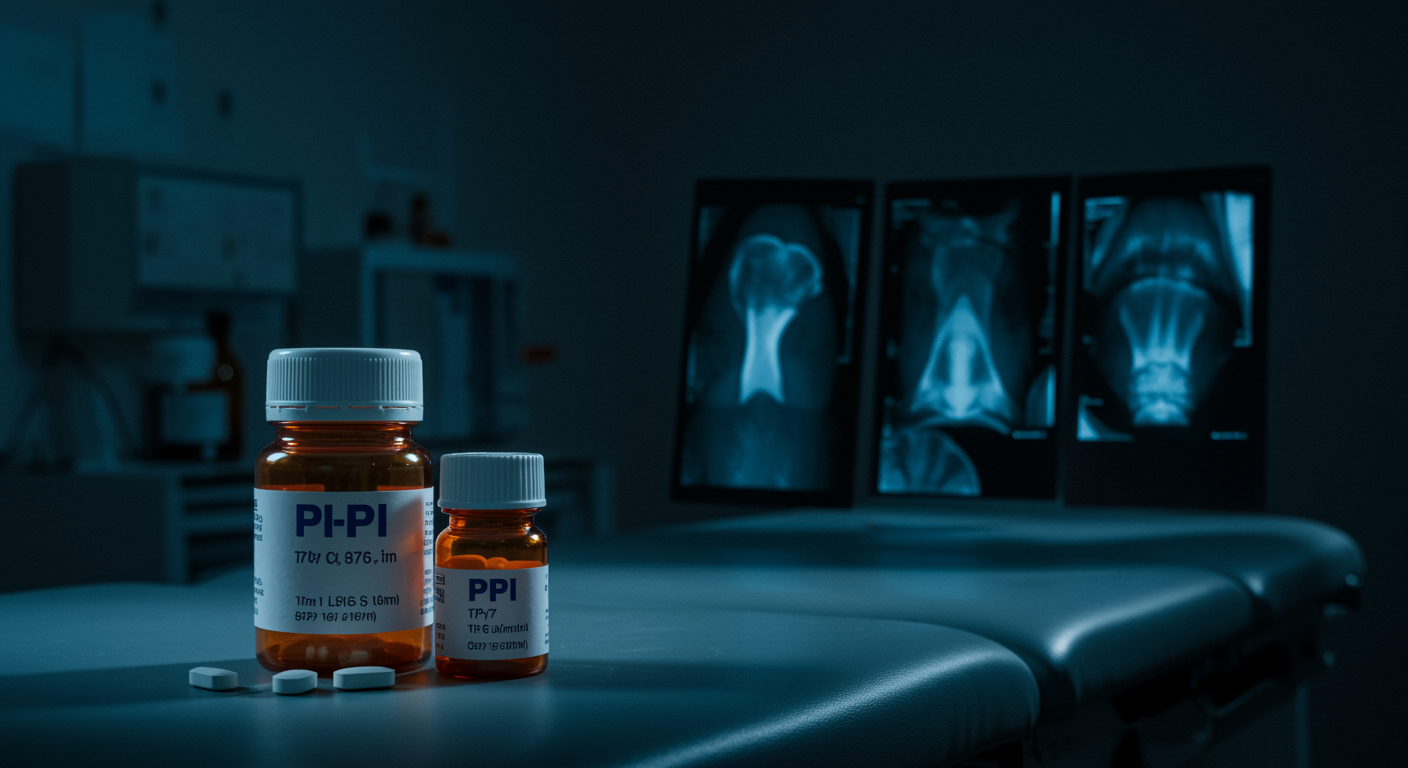Do Proton Pump Inhibitors Increase Your Risk of Bone Fractures?
Yes, proton pump inhibitors significantly increase fracture risk by approximately 30% overall, with hip fractures showing a 34% increased risk according to this comprehensive meta-analysis of 11 international studies. The risk appears highest with long-term use and higher doses, particularly affecting hip, spine, and wrist fractures in older adults.
Dr. Kumar’s Take
This meta-analysis provides compelling evidence for one of the most serious long-term PPI risks. A 30% increased fracture risk is clinically significant, especially for older adults who are already at higher baseline fracture risk. The mechanism likely involves impaired calcium absorption due to reduced stomach acid, along with potential direct effects on bone metabolism. This doesn’t mean we should avoid PPIs when truly needed, but it reinforces the importance of using the lowest effective dose for the shortest duration possible, especially in high-risk patients.
What the Research Shows
This systematic review and meta-analysis examined 11 international studies encompassing over 800,000 participants to assess the relationship between proton pump inhibitor use and fracture risk. The analysis included both case-control and cohort studies from multiple countries, providing robust evidence across different populations and healthcare systems.
The research demonstrated consistent associations between PPI therapy and increased fracture risk across different study designs and geographic regions. The relationship showed dose-response characteristics and was particularly pronounced for certain fracture sites and patient populations.
Study Snapshot
The meta-analysis included 11 observational studies with 807,000 total participants from North America, Europe, and Asia. Studies examined various fracture types including hip, spine, and wrist fractures, with follow-up periods ranging from 1 to 15 years and PPI exposure durations from short-term to chronic use.
Results in Real Numbers
- Overall fracture risk increase: 30% higher with PPI use (OR 1.30, 95% CI 1.15-1.48)
- Hip fracture risk: 34% increased risk (OR 1.34, 95% CI 1.09-1.66)
- Spine fracture risk: 56% increased risk (OR 1.56, 95% CI 1.31-1.85)
- Wrist fracture risk: 9% increased risk (OR 1.09, 95% CI 0.88-1.35)
- Duration effect: Risk increased with longer PPI therapy (>1 year)
- Dose relationship: Higher daily PPI doses associated with greater fracture risk
Safety, Limits, and Caveats
The meta-analysis was limited to observational studies, which cannot definitively establish causation despite strong associations. Potential confounding by indication exists, as PPI users may have underlying conditions or take medications that independently affect fracture risk. The analysis couldn’t fully account for important fracture risk factors like physical activity, smoking, or alcohol use.
Study heterogeneity in PPI dosing, duration, and fracture definitions may affect the precision of risk estimates. Additionally, the analysis primarily included studies from developed countries, potentially limiting generalizability to other populations.
Practical Takeaways
- Assess fracture risk before initiating long-term PPI therapy, especially in older adults
- Use the lowest effective PPI dose and shortest duration necessary for symptom control
- Consider bone health monitoring in patients requiring chronic PPI therapy
- Ensure adequate calcium and vitamin D intake in long-term PPI users
- Evaluate PPI necessity regularly and attempt discontinuation when clinically appropriate
- Consider alternative GERD treatments for patients at high fracture risk
Related Studies and Research
- Proton Pump Inhibitors Therapy and Risk of Clostridium Difficile Infection
- Meta-Analysis: Proton Pump Inhibitors Moderately Increase Risk of Small Intestinal Bacterial Overgrowth
- Pharmacology of Proton Pump Inhibitors
- ACG Clinical Guideline: Guidelines for the Diagnosis and Management of Gastroesophageal Reflux Disease
- Episode 25: The Great GERD Mistake - How Medicine Made Heartburn Worse and How to Fix It
FAQs
How do PPIs increase fracture risk?
PPIs may impair calcium absorption by reducing stomach acid needed for calcium solubilization, and may have direct effects on bone cells that affect bone formation and resorption.
Are all fracture types equally affected by PPI use?
No, spine fractures showed the highest risk increase (56%), followed by hip fractures (34%), while wrist fractures showed minimal increased risk in this analysis.
Should I take calcium supplements if I’m on long-term PPIs?
While calcium and vitamin D supplementation may be beneficial for long-term PPI users, discuss appropriate dosing and monitoring with your healthcare provider based on your individual risk factors.
Can fracture risk be reversed after stopping PPIs?
Some studies suggest fracture risk may decrease after PPI discontinuation, though more research is needed to establish the timeline and extent of risk reduction.
Who is at highest risk for PPI-related fractures?
Older adults, postmenopausal women, those with existing osteoporosis, and patients on high-dose or long-term PPI therapy appear to face the highest fracture risk - discuss bone health strategies with your healthcare provider.
Bottom Line
Proton pump inhibitors increase overall fracture risk by 30%, with particularly elevated risks for hip and spine fractures. This significant safety concern reinforces the importance of judicious PPI use, appropriate dosing, and regular assessment of treatment necessity, especially in older adults at baseline fracture risk.


